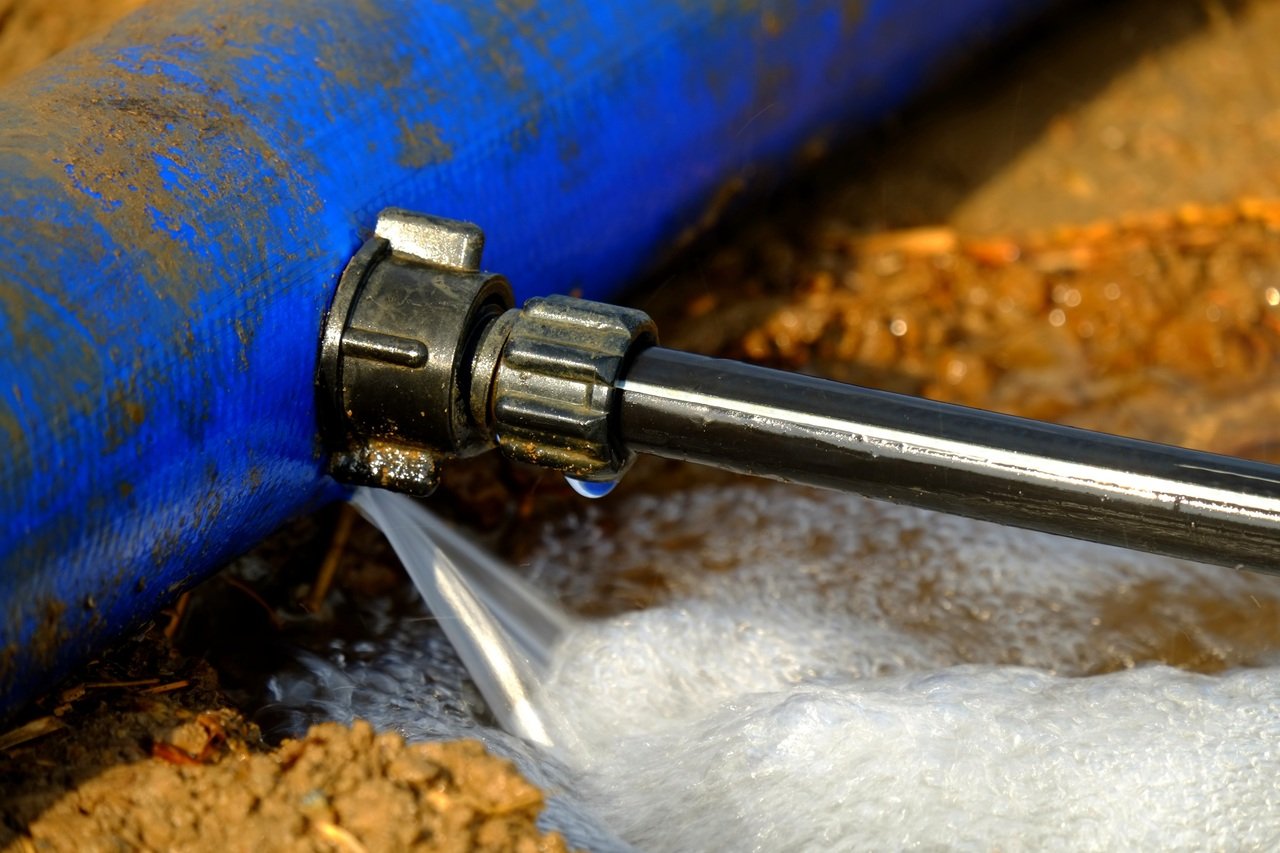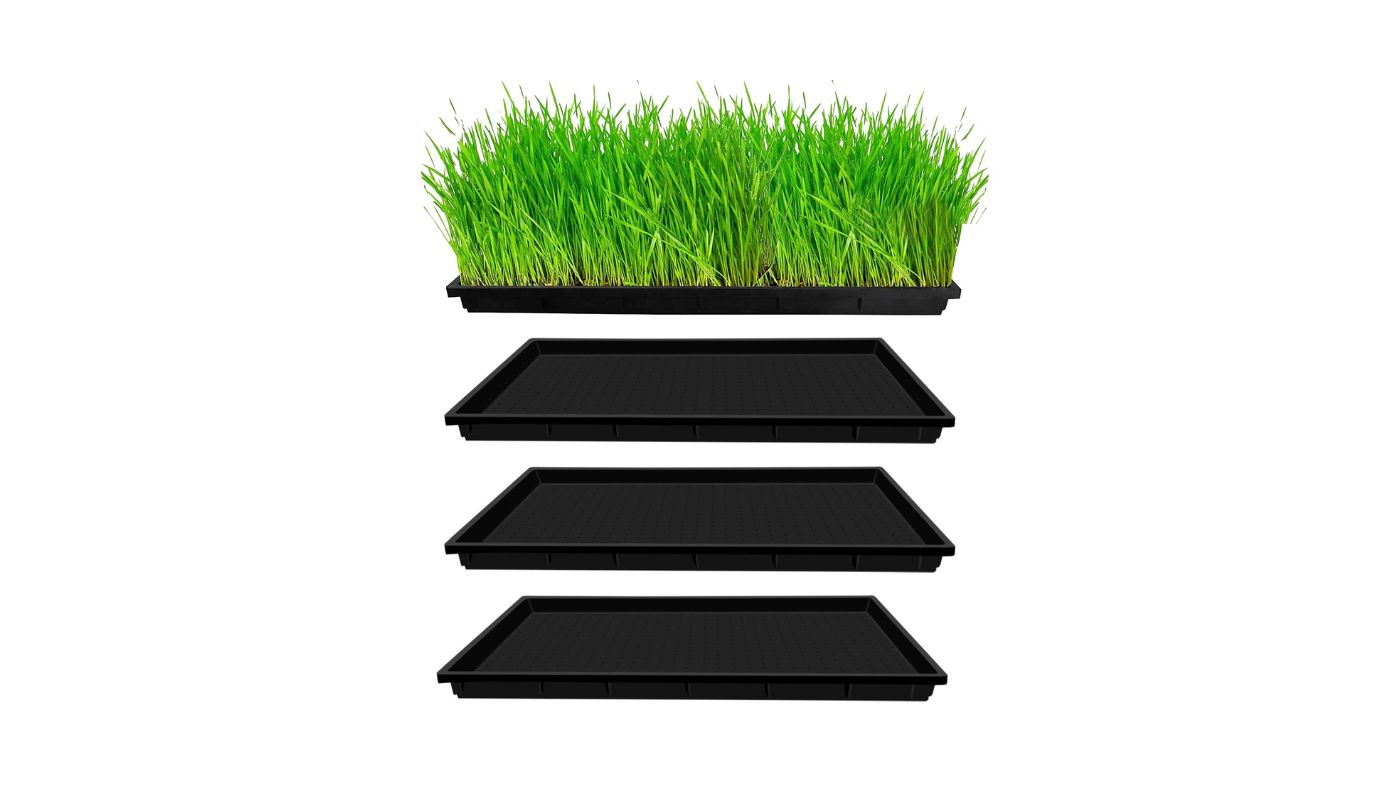Home>Gardening News and Trends>Latest News>Where To Find Good HDPE Trays For Aquaponics – Permaculture


Latest News
Where To Find Good HDPE Trays For Aquaponics – Permaculture
Published: February 16, 2024
Looking for the latest news on where to find good HDPE trays for aquaponics in permaculture? Discover the best options for your aquaponics setup.
(Many of the links in this article redirect to a specific reviewed product. Your purchase of these products through affiliate links helps to generate commission for Chicagolandgardening.com, at no extra cost. Learn more)
Table of Contents
Introduction
Aquaponics, a sustainable agricultural system that combines aquaculture (the raising of aquatic animals) with hydroponics (cultivating plants in water), has gained popularity for its eco-friendly approach to food production. In aquaponics, the use of high-density polyethylene (HDPE) trays is crucial for the successful cultivation of plants. These trays provide a stable and reliable foundation for the plants, ensuring optimal growth and nutrient absorption.
HDPE trays are essential components of aquaponic systems, offering a range of benefits that contribute to the overall efficiency and productivity of the setup. As the demand for sustainable and organic produce continues to rise, the need for high-quality HDPE trays for aquaponics becomes increasingly significant.
In this article, we will delve into the world of HDPE trays for aquaponics, exploring their characteristics, benefits, and where to find top-quality trays. Whether you are a seasoned aquaponics enthusiast or a newcomer to this innovative farming method, understanding the significance of HDPE trays and knowing where to obtain reliable options is essential for the success of your aquaponic endeavors. Join us as we embark on a journey to discover the key aspects of HDPE trays and their vital role in the world of aquaponics.
What are HDPE Trays?
HDPE trays, constructed from high-density polyethylene, are versatile and durable platforms used in aquaponics to support the growth of plants. These trays are specifically designed to withstand the aquatic environment of aquaponic systems, providing a stable foundation for the cultivation of various crops. HDPE, known for its robustness and resistance to corrosion, makes it an ideal material for aquaponic trays.
These trays come in a variety of shapes and sizes, catering to the diverse needs of aquaponic enthusiasts. Whether you are growing leafy greens, herbs, or even fruiting plants, there is an HDPE tray suitable for your specific crop requirements. The lightweight nature of HDPE trays allows for easy maneuverability, making them convenient for installation and maintenance within aquaponic setups.
Furthermore, HDPE trays are designed to facilitate efficient water circulation and nutrient distribution, essential elements for the health and vitality of plants in aquaponic systems. Their smooth surfaces prevent the accumulation of debris and algae, promoting a clean and hygienic environment for plant growth. Additionally, the non-toxic properties of HDPE ensure that no harmful substances leach into the water, safeguarding the well-being of both the plants and the aquatic life in the system.
Overall, HDPE trays serve as the backbone of aquaponic farming, offering a reliable and sustainable platform for the cultivation of a wide array of crops. Their adaptability, durability, and compatibility with aquaponic environments make them indispensable components for enthusiasts and professionals seeking to harness the potential of aquaponics for sustainable food production.
Benefits of HDPE Trays for Aquaponics
HDPE trays play a pivotal role in the success of aquaponic systems, offering a multitude of benefits that contribute to the efficiency and productivity of plant cultivation. Understanding these advantages is essential for aquaponics enthusiasts aiming to optimize their farming endeavors.
- Durability: HDPE trays are renowned for their durability, withstanding the rigors of the aquaponic environment. Their resistance to corrosion and degradation ensures long-term functionality, providing a stable platform for plant growth.
- Compatibility: These trays are compatible with a wide range of plant species, accommodating the diverse needs of aquaponic farmers. Whether cultivating leafy greens, herbs, or flowering plants, HDPE trays offer a versatile solution for different crop requirements.
- Hygienic Environment: The smooth surfaces of HDPE trays prevent the accumulation of debris and algae, promoting a clean and hygienic environment for plant growth. This feature minimizes the risk of contamination and ensures optimal conditions for plant development.
- Efficient Water Circulation: HDPE trays are designed to facilitate efficient water circulation within aquaponic systems, ensuring uniform nutrient distribution to the plants. This promotes healthy root development and optimal nutrient absorption, contributing to robust plant growth.
- Non-Toxic Properties: The non-toxic nature of HDPE ensures that no harmful substances leach into the water, preserving the overall integrity of the aquaponic ecosystem. This feature safeguards the well-being of the plants and aquatic life within the system.
- Easy Maintenance: HDPE trays are lightweight and easy to maneuver, simplifying installation and maintenance processes within aquaponic setups. Their low-maintenance nature allows for convenient management, saving time and effort for farmers.
Overall, the benefits of HDPE trays for aquaponics encompass durability, compatibility, hygienic properties, efficient water circulation, non-toxicity, and ease of maintenance. These advantages make HDPE trays indispensable components for achieving thriving and sustainable plant cultivation in aquaponic systems.
Where to Find Good HDPE Trays for Aquaponics
When seeking high-quality HDPE trays for aquaponics, it is essential to explore reputable sources that offer reliable products tailored to the specific needs of aquaponic farming. Several avenues provide access to good HDPE trays, ensuring that enthusiasts and professionals can acquire the necessary components for their aquaponic setups.
- Specialized Aquaponics Suppliers: Dedicated aquaponics suppliers and retailers often carry a diverse range of HDPE trays designed specifically for aquaponic systems. These suppliers understand the unique requirements of aquaponic farming and offer trays that align with the best practices and standards of the industry.
- Online Marketplaces: E-commerce platforms feature a wide selection of HDPE trays suitable for aquaponics. These marketplaces provide the convenience of browsing through various options from different sellers, allowing farmers to compare products, read reviews, and make informed purchasing decisions from the comfort of their homes.
- Local Hardware Stores: Many local hardware stores stock HDPE trays that can be repurposed for aquaponic use. While not specifically marketed for aquaponics, these trays can serve the purpose effectively and may be readily available for purchase, offering a budget-friendly option for farmers.
- Direct from Manufacturers: Some aquaponics enthusiasts may choose to source HDPE trays directly from manufacturers, especially if they have specific customization requirements or seek bulk orders. Establishing direct relationships with manufacturers can lead to tailored solutions and potential cost savings.
When selecting a source for HDPE trays, it is important to consider factors such as product quality, reputation of the supplier, pricing, shipping options, and customer support. Additionally, evaluating the specific requirements of the aquaponic system and the intended use of the trays will guide the selection process, ensuring that the chosen trays align with the goals and operational needs of the farming setup.
By exploring these avenues, aquaponics enthusiasts can find good HDPE trays that meet the standards of durability, functionality, and compatibility essential for successful plant cultivation within aquaponic environments.
Considerations When Choosing HDPE Trays
When selecting HDPE trays for aquaponics, several key considerations should guide the decision-making process to ensure that the chosen trays align with the specific requirements and operational dynamics of the aquaponic system. By evaluating these factors, aquaponics enthusiasts can make informed choices that contribute to the overall success and efficiency of their farming endeavors.
- Size and Configuration: Assess the space available within the aquaponic setup and the intended scale of plant cultivation. Choose HDPE trays that fit the available space and can accommodate the desired quantity of plants, ensuring optimal space utilization and efficient crop management.
- Material Quality: Prioritize trays constructed from high-quality HDPE material known for its durability and resistance to corrosion. Selecting trays with superior material quality ensures long-term functionality and reliability within the aquaponic environment.
- Compatibility with Plant Varieties: Consider the types of plants to be cultivated in the aquaponic system and choose trays that are compatible with the specific requirements of those plant varieties. Different crops may necessitate varying tray configurations and features to support their growth effectively.
- Water Circulation Design: Evaluate the design of the trays to ensure efficient water circulation and nutrient distribution to the plants. Opt for trays that promote uniform water flow and nutrient absorption, contributing to the overall health and vitality of the cultivated crops.
- Ease of Maintenance: Select HDPE trays that are easy to clean and maintain, minimizing the effort required for regular upkeep. Trays with smooth surfaces and accessible cleaning points facilitate convenient maintenance, contributing to a hygienic and well-managed aquaponic environment.
- Supplier Reputation and Support: Consider the reputation of the supplier or retailer offering the HDPE trays. Choose reputable sources known for their commitment to quality and customer support, ensuring a positive purchasing experience and access to reliable products.
By carefully considering these factors, aquaponics enthusiasts can make informed decisions when choosing HDPE trays, ultimately enhancing the functionality, efficiency, and sustainability of their aquaponic farming operations.
Conclusion
HDPE trays stand as essential components in the realm of aquaponics, offering a sturdy and reliable foundation for the cultivation of a diverse array of plants. Their durability, compatibility with different plant varieties, and ability to facilitate efficient water circulation make them indispensable assets for aquaponic enthusiasts and professionals alike. As the demand for sustainable and organic produce continues to soar, the significance of high-quality HDPE trays in supporting the growth of crops within aquaponic systems becomes increasingly evident.
When seeking good HDPE trays for aquaponics, enthusiasts can explore specialized aquaponics suppliers, online marketplaces, local hardware stores, and direct relationships with manufacturers to access reliable and suitable options. By considering factors such as size, material quality, compatibility with plant varieties, water circulation design, ease of maintenance, and supplier reputation, aquaponics enthusiasts can make informed decisions when selecting HDPE trays, ensuring that the chosen trays align with the specific needs and operational dynamics of their aquaponic setups.
Overall, the role of HDPE trays in aquaponics extends beyond providing a platform for plant growth; they contribute to the efficiency, sustainability, and success of aquaponic farming, fostering a harmonious ecosystem where aquatic life and plants thrive in unison. As the journey of aquaponics continues to unfold, the reliance on high-quality HDPE trays remains a steadfast pillar in the pursuit of sustainable and bountiful food production through this innovative agricultural method.





